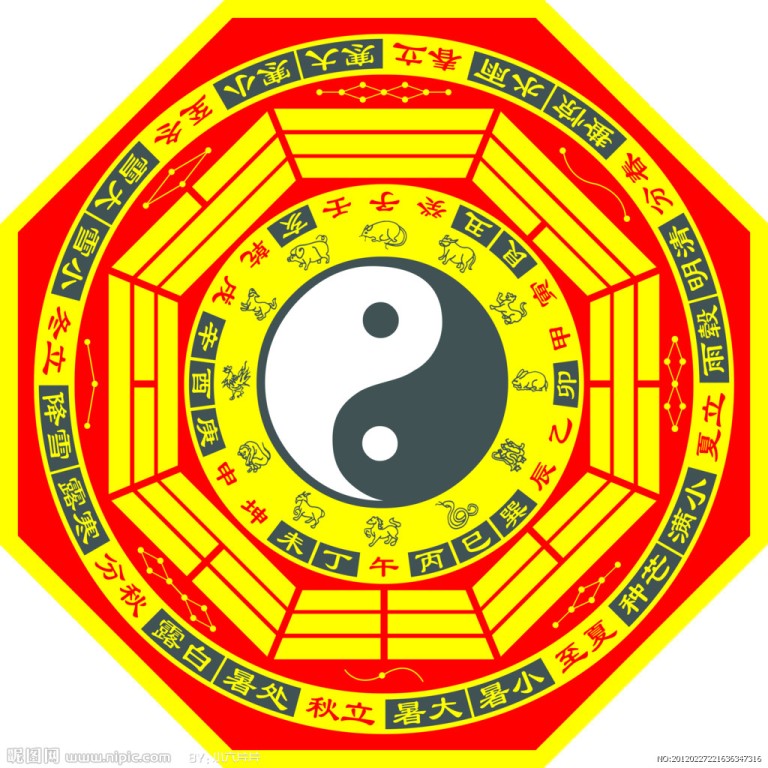The Cycle of Meaning in the East and West
By Will Boyd, PhD
“Once the author is distanced, the claim to ‘decipher’ a text becomes entirely futile.”
“Thereby, literature (it would be better, for now, to say ‘writing’), by refusing to assign to the text a ‘secret’, i.e., an ultimate meaning, liberates an activity we may call ‘counter-theological,’ properly revolutionary, for to refuse to halt meaning is finally to refuse God and his hypostases, reason, science, and law.” – Roland Barthes, “The Death of the Author”

Jung’s Meaning of the Book of Changes
“If the I Ching is not accepted by the conscious, at least the unconscious meets it halfway, and the I Ching is more closely connected with the unconscious than with the rational attitude of consciousness.”
In the middle of the last century, the world famous psychological theorist, Carl Jung, proposed that the Chinese Book of Changes had been misunderstood by the Chinese traditional worldview, and that he finally presented the key to a true understanding of this ancient and mysterious text. His method laid the groundwork for the “death of the author” mentality that pervades modern literature. He proposed that the readings of the Book of Changes were nonsense, having no connection with a real story or historical context, but that it was this nonsensical nature that was vital – for in the interpretation of the “Signs of Change” one could read their true heart’s desires. The skill was then, not the interpretation of the fortune, but the interpretation of the fortune’s interpretation.

“In the I Ching, the only criterion of the validity of synchronicity is the observers opinion that the text of the hexagram amounts to a true rendering of his psychic condition. It is assumed that the fall of the coins or the result of the division of the bundle of yarrow stalks is what it necessarily must be in a given ‘situation,’ inasmuch as anything happening in that moment belongs to it as an indispensable part of the picture. If a handful of matches is thrown to the floor, they form the pattern characteristic of that moment. But such an obvious truth as this reveals its meaningful nature only if it is possible to read the pattern and to verify its interpretation, partly by the observers knowledge of the subjective and objective situation, partly by the character of subsequent events. It is obviously not a procedure that appeals to a critical mind used to experimental verification of facts or to factual evidence. But for someone who likes to look at the world at the angle from which ancient China saw it, the I Ching may have some attraction.
“The I Ching insists upon self-knowledge throughout. The method by which this is to be achieved is open to every kind of misuse, and is therefore not for the frivolous-minded and immature; nor is it for intellectualists and rationalists. It is appropriate only for thoughtful and reflective people who like to think about what they do and what happens to them – a predilection not to be confused with the morbid brooding of the hypochondriac.” – Carl Gustav Jung, Introduction to the I Ching, Translated by Richard Wilhelm
This view has not been held by the Chinese community until recently, but is quickly gaining popularity through translations that now rely of this method to explain the power of the “I Ching” to predict the future. While Jung literally knew nothing about Chinese, his explanation has become more attractive to the youth of China than their grandparents’ “superstitious” views of the universally symbolic nature of the whole and broken lines. This Western method of interpreting China’s oldest oracles has gained popularity because the community has ceased to be meaningful to Chinese youth (and thus the meaning that was assigned by the community is invalidated), and it has gained currency because the Chinese are all about making a statement about their individuality. At least now, with a Western psychological readings of their own traditional culture, they can stop talking about the stories passed down to them through history, and start talking about who they are, what decisions they are making, and why. But, they can do so without hurting their pride – “China had individualist psychology long before the West ever did!”
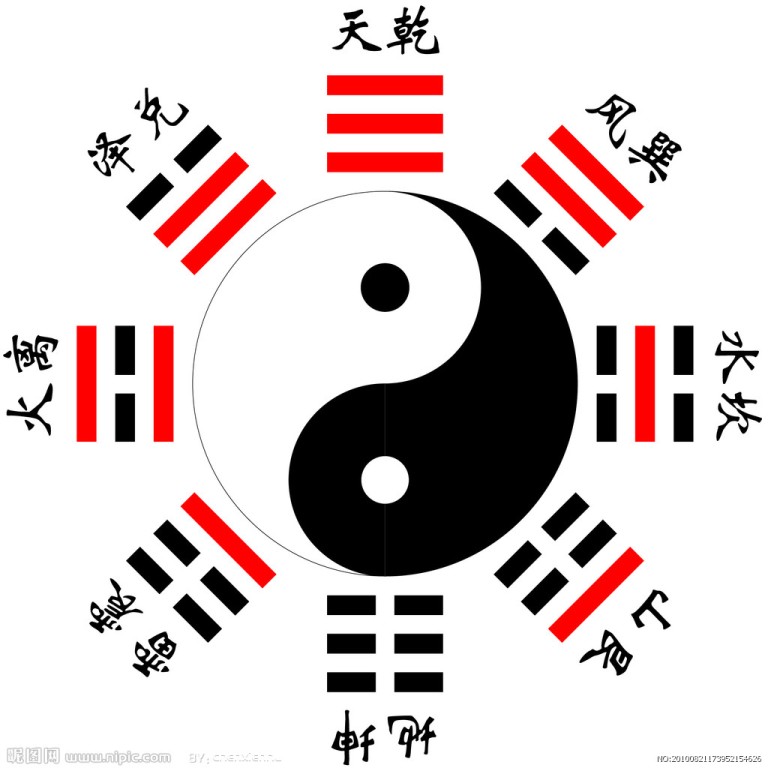
I Ching Interpretation as a Revelation of Western Critical Process
The Jungian process of interpreting the Book of Changes is identical, in many ways, to the way that liberal Christianity has employed the Textual Criticism Process to understanding the Bible, since the value of the text is only as an excuse to justify personal decisions under the guise of what God says. Texts become accessories to political power, and are ensconced within religion by cultural leaders for this reason only. The first step is to deny all claims to a substantiating community of texts, and reject all claims of authority by the community of authors to accuracy. After this has been denied, then the only significance of the text becomes its historical use (its precedents), and its meaning becomes a narrative of abuse. When this narrative is communicated through a culture of individualism and cynicism, it creates negative reaction within its contemporary readers, and since the reactions of the readers are understood to be the true content of the message, the text is rejected as a helpful or informed work… no meaning would be gotten of the text, even if there was one to be had. Therefore, a text is completely robbed of the intent of the author, a new intent is read into it, and everyone ends of feeling badly about the whole process, finally believing that it is better not to read (or, by analogy, better not to be alive!). What stands true for a text is also true for a community.

Humanity craves an identity, but beyond our experience of sentiency, we have no definition of self otherwise available, outside of what relational compounds we pile up on this perception of time and space. We can only “see ourselves as others see us” and thereby gain an appreciation for our own existence through relationships. Before the enslavement of the individual to modern categories of work, humanity took this identity for granted, since the basis for all existence was rooted in human units called “family”. These units created the foundation for larger cultural affiliations, grouped around locality, lineage, and language, and provided an identity that incorporated all these facets as an aspect of the individual. Now that we have become isolated through family breakdown, corporate systems, and artificial life-styles, we have no immediate identity. Therefore, an identity crises sets in, because the need for context is the greatest attribute of the human soul; humans cannot survive without finding answers to the basic questions of “Who am I, Where do I come from, and Why am I here?” Our basic programming is a heat-seeking missile, honed at birth upon finding the answers to these questions.
Vital to this search for humanity is the process of understanding meaning – and “meaning” is determined through the lexical agreement of a community. Only when there is a communal reference point can meaning actually be procured from communication, since everything is basically “compared” to a basic culture of texts that is assumed by the individual within culture to describe the universe in comprehensible terms. When the community is disregarded, or the individual is exulted above it, other references must be found to stand in for those lost references of family and community, and therefore, natural objects, accumulated information, or historical schools of thought must be consulted to build a “data base” through which meaning can be comparatively extracted.
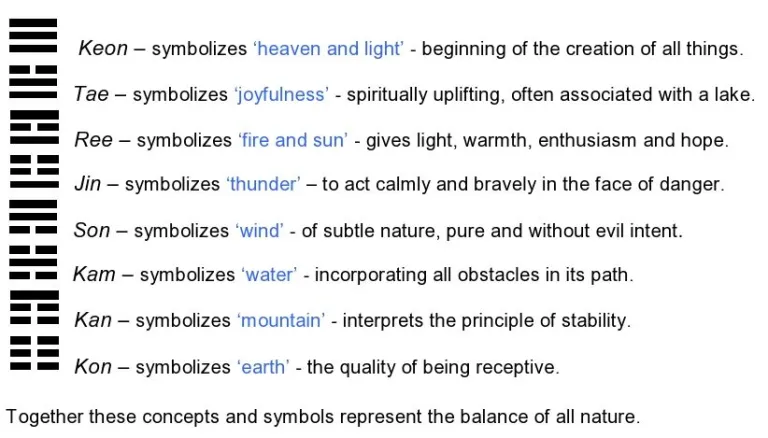
China is in this final stage of westernization and ‘individuation’, and is experiencing the devastating re-categorization of human identity that accompanies this shift. With the breakdown in family, only two areas of sentient comparison survive that serve to connect the individual to the greater society – sex and money, and identities are shifting to these two poles as inner definitions of self worth. The visible cultural shift from a love of children and inter-generational living to materialism and recreational sexuality is striking in its similarity to the West, and also in its overwhelming speed and complete lack of cultural resistance. In this final stage of globalization, the meaning that would have been “channeled” by the user of language into communication, which finds it ultimate context within the community, is lost, the author loses the right to speak, and the receiver is left to form meaning (contextual interpretation) from the sensation of reaction that necessarily follows the discontinuity and isolation of this new found “individualism”. The method for finding this meaning must then be specifically focused upon interpreting the self in creative and meaningful ways, so that the answers to life’s basic questions can be, at least figuratively, addressed! Thus, Chinese must now reinterpret their traditional culture and inter-textualities through the grid of western philosophy, which has no indigenous interface with Chinese life. Despite this incompatibility, the western methods of interpretation are accepted as fitting current standards better than anything the Chinese used before.

This meta-cultural phenomenon is not new, contrary to what we feel. It is actually a reoccurring pattern within community and literature that we can document within the progression of Western culture. The eventual loss of meaning, and a turn towards self-definition is described by every culture’s history, as the golden age passes and self-destructive nihilism sets in, due to the flaws of human nature, which dictates that pride and disregard invariably follows success. Endeavoring to excuse personal behavior that endangers the communal prerogatives, the “conscience” of the culture must be set aside (the agreed definitions of the universe, as per a social contract), and with it the definition of words; which results in new definitions being forced upon the culture through self-declared authorities. Once the original meanings are contradicted and accepted, the culture changes permanently, and the memory of a textual community is obliterated and erased from the “reference library” of the cultural consciousness. This process of change can continue until the biological base of the culture is sufficiently eroded as to create actual extinction of the race and culture through low birthrates, disease, suicide, or replacement by more “conservative” cultures.
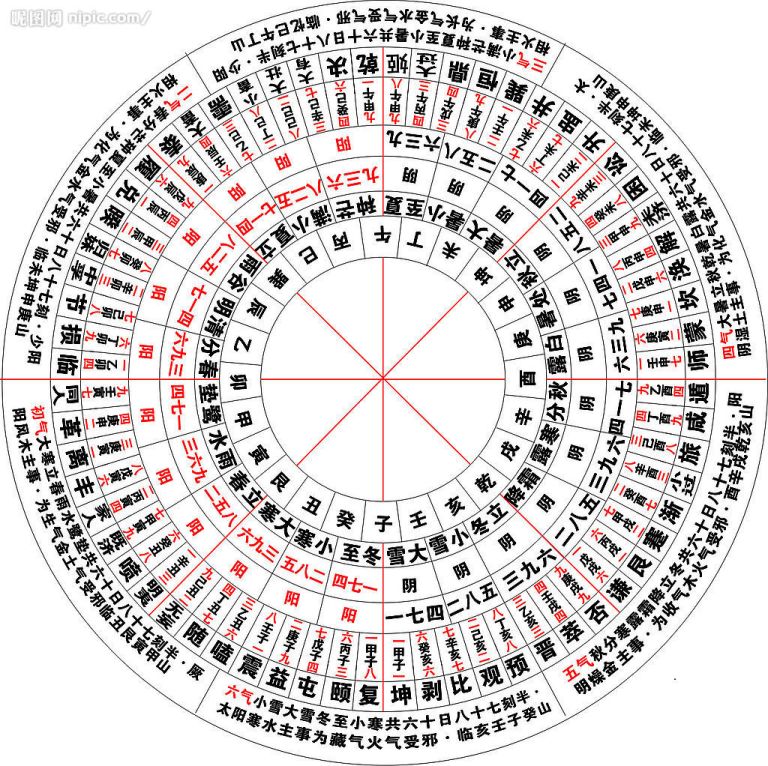
The Changing Form of Individuation through Social Entropy
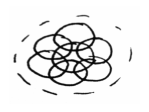
☰ Figure One: Tribal Consciousness – The Overlapping Group Identity
- Within all “Primitive Societies” the Individual is defined through the relationships of the community – The Traditional Family Mentality of Universal Culture – Identity is established in an “outside in” relationship. The person defines his existence through the proximity of other humans. This system is perennial, and the existence of the human race depends upon this model for biological survival.
- Texts are defined by families of commentaries and within texts of similar topic and linguistic usage.
- This “community” defines and transmits a worldview, which is based on the “sum of the parts” and not on the “individual works.”
- The remarkable nature of this system is that it is both biological and ontological, self-sustaining and self-protecting, and has no known flaws beyond “pride” and “cruelty” (innate problems within the human mind, but not within the system, “vice” and “laziness” being rendered impractical and self-regulating).
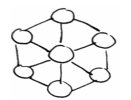
☱ Figure Two: The “City of God”, a Society Structurally Balanced by Mutual-Accountability
- The “Orthodox” System – Within the early Christian Church, you have the “first among equals” perception of a hierarchy of bishops, which was a combination of the “family system” locally and a “family system” internationally. This system does not accomplish an economy of “surplus” through the “dividing of labor”, but the rigorous training of the individual to serve the interests of all insures the fitness of the group, and this system is remarkably hardy, able to insure the transfer and propagation of its culture indefinitely. The greatest challenges to its survival is breakage in communication due to the indigenization of its cells, and the loss of an impetus to function as a whole, once self-sufficiency is realized as a local community.

☲ Figure Three: The “Great Scholastic Empire” in a Mono-Directional Model of Accountability and Centralization
- The “Catholic” System – China’s Central Administration, the Roman Empire, and the Holy Roman Empire all shared similar traits in that it was a knowledge-based economy that focused on coordinating manpower through managerial prowess. This system generates wealth, but looses the focus of mutual enrichment that the Orthodox system creates, and also “leaves behind” those who cannot contribute to the center. The longer this system is taken for granted, the more cruel it becomes to the people who work within it, and the more “mechanized” it tends to become. Only rebellion sets this system back.
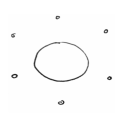
☳ Figure Four: Expanded Definition of Self with Atrophied and Disconnected Social References
- The “Renaissance/Enlightenment” System – When the individual is left without a community of supporting and overlapping categories, then the individual achieves a momentary victory, where the single point becomes all-important – Papal Supremacy, Reformation Theology, and Sola Scriptura – The Empirical Acceptance of Innate Existence as a “Self-Evident” Principle (ego cogito sum). Artistically, this movement can be seen through the likes of Michelangelo, Da Vinci, and Raphael, who, while profoundly exulted as individuals, still studied classic examples of archeology to define their schools and their styles.
- Texts are defined through self-reference, and through appreciation of the textual uniqueness and importance of the innate assumed meaning, which is inherited from the community but not actively acknowledged.
- This is a form of cultural denial that one often sees during times of reformation or revolution – it stems from a desire to find freedom through isolation, which is the human psychological way of dealing with abuse.
- Erasmus, the “Compiler” of the Greek Received Text is an incarnation of this mentality, insisting upon the compatibility of “Humanism” of “Biblical Philosophy”, comparing texts, making logical, well-informed decisions about the inclusion to his inclusive text – relying upon the witness of authority while reserving ultimate power of discrimination and decision for himself.
- Texts are defined through self-reference, and through appreciation of the textual uniqueness and importance of the innate assumed meaning, which is inherited from the community but not actively acknowledged.
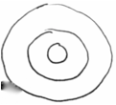
☴ Figure Five: In-Focused Definition of the Self’s Compositional Structure without Outward References
- The “Romantic” Modality – But as the outward references fade away, the individual must continue the process of dissection, reduction, and elimination within himself, breaking the person down into basic components, needs, and establishing identity based on these parts, in order to define contrasts through which meanings are created – The Romance of the Self-Tormented – This intense self-focus is the seed-bed of the intensely personal, painful, inspired art of lonely artist.
- Texts are imaginatively reinterpreted in the light of contemporary culture, so as to augment their importance within a new context.
- The text is thought to be important through the contemporary contextual interpretation, and not through any original contextual meaning.
- The Protestant textual process is inconsistent, since it will use lexicons distilled from communities of texts (and from living communities), while claiming to use the Bible alone… Erasmus and Strong pulled upon living communities of Greeks and comparison of Patristic writers, even though the average man supposedly had no need to.
- This is exactly like the dependence of the Romantic hero upon the appreciation of his audience.
- Romantic individual identity is an “inside out” process of definition.
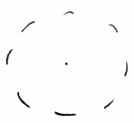
☵ Figure Six: Differentiation between Self, the Composition of Self, the Difference between Inside and Outside Evaporates, and only the Experience of Sentiency Remains (while “Self” becomes a Meaningless Category)
- Embracing a Culture of Doubt – Once the meta-nous of the community structure is completely forgotten, the individual looses the meaning of words, which originally found their power in the agreement of the community, and thus the definition of the parts of self stop having associative power – Postmodernism is reached as a cultural conclusion of individuality – Kierkegaard also showed the philosophical baggage associated with this complete loss of meaning, in that it created the need to leap into something completely unknown to find a definition (which he called “faith”, one of the few things left by the Reformation that stood where the witness of the community had been). Faith is no longer an “evidence of things unseen”, but an irrational and inexplicable primitive impulse.
- Texts lose all connection to meaning, and are used merely because they were historically used, and because of the response that they create in the imagination of the reader – the text is believed to be a “Jungian Book of Changes”, in that the reader’s contextualization of the piece is supposed to reveal the internal heart issues of the reader (which is believed to be more significant than the original context and meaning of the text itself), a textual inkblot for determining the meaning the reader assigns.

☵ Figure Seven: The Self is defined through Nothingness, and Nothingness is assumed as the Primary Characteristic of the Universe, Making Self Everything and Nothing at the Same Time (This is the Pantheistic Self of a Buddhist Metaphysical Breakthrough, the Futility of Postmodern Comparison, or a Nihilistic Cultural Breakdown)
- The Culture of the Death of Culture – The individual is meaningless to self; being self-referential and self-canceling simultaneously… the state of ineffectual contradiction becomes an aesthetic appreciated in its own right. The end of the communicated message within self is reached. – Nihilism – Frederic Nietzsche, contrary to lauding this inevitability, lamented that this brought the “Death of God.”
- Even the reader’s reaction and contextualization of the text is worthless, because the text does not offer a solution to the problems that it generates within the mind of the reader – since language has ceased to have the ability to communicate truth higher than the assumed attitudes of the reader… thus the reader can not be helped by texts that cause a reaction, and is damned to ceaselessly react.
- This entire set of aesthetic assumptions does not reflect reality, but reflects a cultural attitude, which once accepted for reality, makes communication and learning and impossible – literally a “bad attitude” that is cultivated within society.
- Illiteracy and ignorance is a superior mental state to this blackness of soul, and so those left within the culture cultivate intentional blindness to religion and philosophy, hoping to be spared the pain that it has caused those they knew and loved.
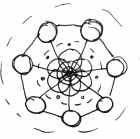
☷ Figure Eight: Accepting the Definition of Self as Overlapping, Mutually Accountable, Centralized, Referential, Self-Compounding, and Experiential – Everything at the Same Time – Self Defined by the Potential of All Possible Relationships within Space and Time
- Return to historical narrative as a “metanoian” unifying structure – accepting and embracing all periods of development within history as real, necessary, defining relationships through cause and effect, and rediscovering personal identity as the process of community.
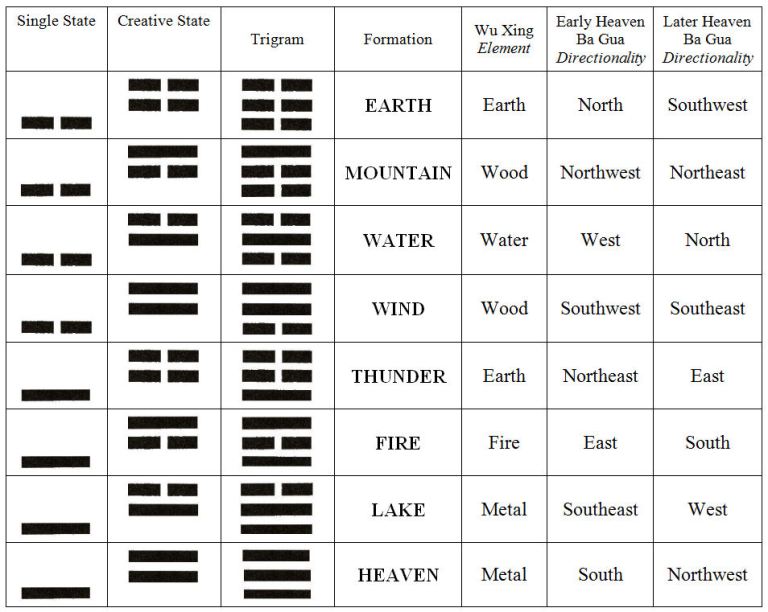
Explaining the Jungian Hermeneutic of the Book of Changes from the Perspective of the Traditional Cultural Interpretation of the Book of Changes
The process of delineating the necessary steps of entropy within a society, while not necessarily forward-moving, is the traditional interpretation of the meaning of the Book of Changes from within the Chinese textual community (step 5 and 6, 7 and 8 moved back and forth quite liberally within Western history). The I Ching attempts to show an overlaying metaphysical pattern of creation, entropy, and recreation that cycles through everything within Creation. This “Change” is an unchanging rule, and reveals the message of Heaven (天命), the “Mover” in the world, which determines all that happens based on a Personal Will.
While Jung dismissed this theory of interpretation as unnecessary and unfitting, this theory explains Jung’s theory dramatically as a necessary step along the path of degeneration within cultural categories of meaning. The community of Chinese Ancients explains Jung, but Jung was not able to explain them.
